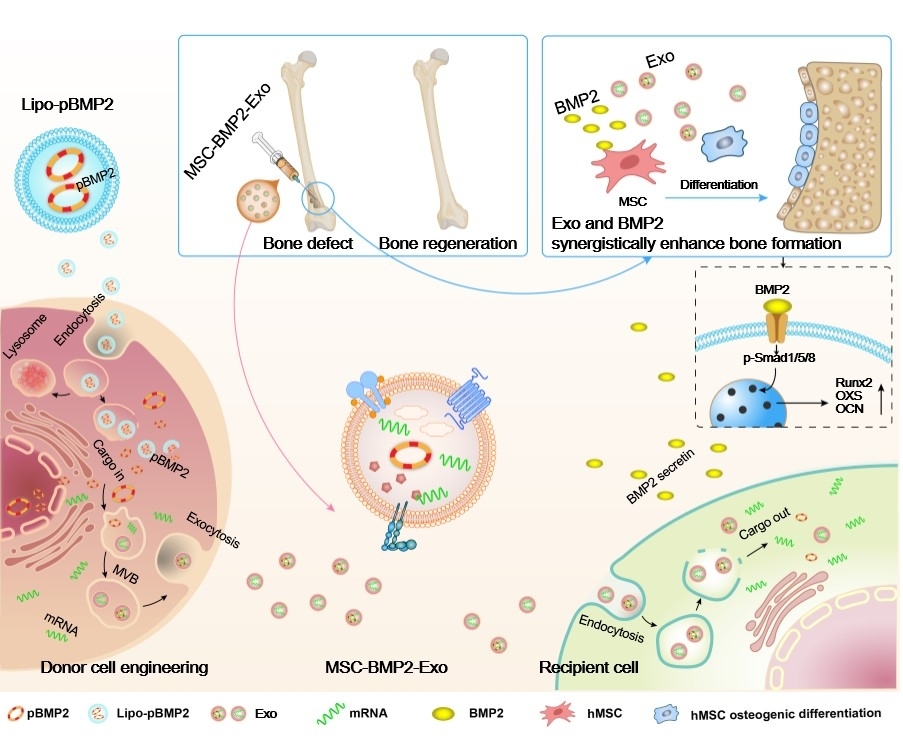Researchers Develop New Strategy for Genetically Engineering Stem Cells
Date:12-04-2022 | 【Print】 【close】
Stem cell therapy has been widely applied for tissue regeneration. Recently, stem cell-derived exosomes (MSC-Exo) have attracted significant interest for their “cell-free” therapies. Therefore, it provides a promising strategy for skeletal tissue regeneration to meet the increasing demands raised by nonunion fractures, severe trauma, malignancy resection, and aging of the population.
However, the regeneration capacities of exosomes are susceptible to MSC sources, as well as cell status, and further improvements are usually required.
A research team led by Dr. ZHAO Xiaoli from Shenzhen Institute of Advanced Technology (SIAT) of the Chinese Academy of Sciences (CAS) along with collaborators from the University of Hong Kong-Shenzhen hospital have developed a strategy of genetically engineering stem cells by bone morphogenetic protein-2 (BMP2) gene to produce exosomes (MSC-BMP2-Exo) with enhanced bone regeneration potency.
The study was published in the Journal of Nanobiotechnology on March 15.
Exosomes are nano-sized vesicles secreted by living cells containing proteins, RNAs and metabolities. As a natural means for cellular communication, exosomes can transport their contents to recipient cells to regulate their functions and behaviors. Stem cell derived exosomes have been found an important mediator for regulation tissue regeneration.
This study adapted a stem cell-mediated gene therapy (MSC-GT) strategy and applied it in bone regeneration, in which BMP2 genetically modified MSCs function as cellular factories. These factories effectively produce exosomes with designed and enhanced therapeutic effects, while increasing the safety compared with that in conventional gene delivery vehicles.
The enhanced bone regeneration effect was attributed to the synergistic effect of the content derived from MSCs and the up-regulated BMP2 gene expression, which were proven by in vitro and in vivo studies through activating BMP2/Smad signaling pathway.
"The safety of drug delivery vehicles is important, and exosomes produced by these MSCs exhibited excellent biocompatibility," said Dr. ZHAO, "in addition, plasmid DNAs only induce temporary gene expression modulation, which avoids the risks of insertional mutation."
By DNA tracking, a proportion of plasmid DNAs were re-encapsulated by mediator MSCs and delivered to the recipient cells through exosomes.
By intravenous injection, some MSC-BMP2-Exos were found be able to home to the bone defects.
Finally, this strategy can tremendously broaden sources of exosome donor MSCs.

Exosomes derived from BMP2 genetically engineered MSCs promote bone regeneration. (Image by SIAT)
Media Contact:
ZHANG Xiaomin
Email:xm.zhang@siat.ac.cn
